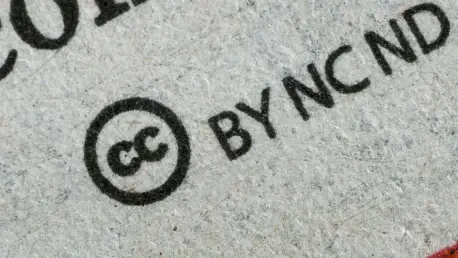In a world rapidly embracing artificial intelligence, the creative industries are faced with a monumental challenge—how to effectively harmonize AI advancements with existing copyright laws. As AI technologies become increasingly integral to the creation of music, art, and literature, the tension between innovation and traditional copyright protection intensifies. The CoSTAR National R&D Lab, in collaboration with DECaDE and Sheridans, has taken a proactive step in addressing this friction by developing a comprehensive copyright framework. This initiative is set to redefine how AI and copyright laws coexist, ensuring creators’ rights are respected while fostering technological advancements.
The CoSTAR Initiative: Balancing Rights and Innovation
The CoSTAR initiative is centered around the development of a framework that addresses five key principles: Access, Control, Consent, Compensation, and Transparency. This framework aims to balance the rights of content creators with the needs of AI developers. As AI technologies gain the ability to generate creative work, questions arise regarding ownership and control. CoSTAR’s framework offers a structured approach to these dilemmas, advocating for a machine-readable system that allows copyright holders to protect their work while simultaneously providing a legal pathway for AI firms to access and utilize data.
A central theme of the initiative is the establishment of a fair and ethical system that respects existing copyright laws while accommodating AI innovation. Industry experts involved in the initiative emphasize the importance of creating a harmonious coexistence between creativity and technology. By aligning the needs of both content creators and AI developers, CoSTAR envisions a future where innovation thrives without undermining the historical safeguards established for creative works. This carefully crafted roadmap not only addresses current issues but also positions the UK as a global leader in managing the intersection of AI and the creative economy.
The Roadmap to a Harmonious Creative Ecosystem
CoSTAR’s “Time to ACCCT” report serves as a comprehensive guide for navigating the complexities of AI and copyright integration. The report advocates for a transparent method that protects the rights of creators while providing AI technologies the ability to access creative content legally. By addressing access and consent, the framework encourages collaboration between creators and technologists, fostering an environment where technological advancements are not seen as a threat but as an ally to creativity.
This initiative underscores the need for a balanced approach in crafting regulations that safeguard intellectual property while embracing AI’s transformative potential. The roadmap provides strategic recommendations for technologies and policies that can facilitate this balance, aiming for a future where creative industries flourish alongside AI. By doing so, CoSTAR is driving the narrative that both human creativity and AI development can coexist, ultimately redefining boundaries and expanding the horizons of what’s creatively possible.
A Path Forward: Aligning Creativity and Technology
In a swiftly evolving world dominated by artificial intelligence, creative industries face immense challenges in integrating AI advancements with established copyright laws. As AI becomes a pivotal player in the creation of music, art, and literature, the balance between innovation and traditional copyright protection becomes increasingly challenging. To tackle this issue, the CoSTAR National R&D Lab, working with DECaDE and the law firm Sheridans, has taken an active role in developing an extensive copyright framework envisioning a harmonious fusion between AI evolution and copyright regulations. This pioneering effort aims to redefine the coexistence of AI and copyright laws, safeguarding creators’ rights while simultaneously promoting technological progress. By developing this framework, there is potential for a future where AI-driven creative work can thrive, all while ensuring that the fundamental rights of traditional creators are not only preserved but also respected in the realms of innovation.









